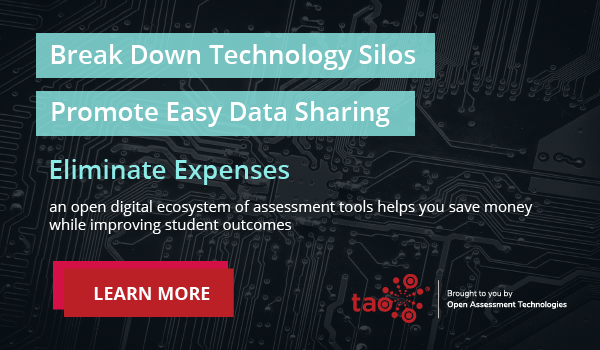Advancement programs are vastly effective for professional development. By taking part in these programs, participants can unleash their full potential and progress toward senior roles within their organizations.
A key aspect of many advancement programs is assessment, which often leads to a certification in the competencies being measured. These assessments are typically paired with rigorous practice and instruction to prepare professionals in the program for the real-world challenges they would face on the job. In this way, assessment is used to help participants practically prepare for or advance in their careers, while providing actionable insights that help providers understand the effectiveness of their instruction.
These testing results go far beyond supporting the individual’s professional development. In fact, by analyzing testing results across the board of participants, you can vastly improve your entire program and deliver better outcomes, and ultimately, elevate your brand power to attract more participants.
Step 1. Gain a Wealth of Data
More data equals deeper knowledge — and insight — into how your advancement program is performing. The data can range from test scores to attendance metrics. Important factors include how often you gain a healthy range of data, how well you can sort through the noise and what you do with that information.
When you test your participants on a regular basis, you gain a clearer picture of what is and isn’t working in your program. Frequent assessments following a regular schedule are vital to not only monitoring individual performance but to adapting content and instruction for your program. The more information you gain, the better you can pinpoint the consistent issues (or, on the other hand, what’s working exactly as intended).
Additionally, the more data you have, the quicker you can identify outliers in your data pool. You don’t want to make decisions based solely on your worst or best performers. When you’re regularly testing and reflecting on performance — and have analysis to back up your current decisions and future initiatives — you pave the path to better, more insightful data that drives performance and value across your program.
Step 2. Unify Your Data
What you need to know about your participants’ or program’s performance isn’t always limited to what you can uncover with a single type of assessment. In fact, you may not get a clear picture of the people in your program — or your advancement program itself — unless you involve a range of strategies appropriate for inferences relevant to the participant and their engagement in the program (and even their engagement over time). In addition, in order to assess how well one strategy works versus another, you must have access to the resulting data.
Of course, it’s not always possible to get every test result for every participant. However, if the same student has taken an assessment with your program before — or at an associated partner program — having unified access to that data is invaluable. Even more so, if you offer multiple courses, or even various levels of the same advancement program, having an analysis of past performance can make or break how well a professional performs.
Thus, having all the relevant data in one place can make the difference between a successful program and one that fails. When your advancement program is part of an interoperable ecosystem, your data is centralized, connected and accessible.
Step 3. Learn from Your Data
The quality of instruction is reflected concretely through assessment. Effective instruction should yield great results in your advancement program, and subpar outcomes should help you pinpoint areas that require a different approach to instruction. That is, the instruction and the data should always feed into one another.
When analyzing your data, it’s vital to revise your practices to improve the performance of your advancement program. You want to combine testing techniques in a way that enables participants to demonstrate their professional competency in a range of ways. Then you can use the insights you uncover to address gaps in content, support coherent instruction and boost performance.
—
To improve your advancement program, you have to know what to do with the resulting data. Data can provide opportunities for not only improvement of individuals in your program but for the program’s recognition, performance and revenue. To learn more about building an EdTech ecosystem that supports top-of-the-industry assessments, check our blog series on interoperability and modern assessment tech.

